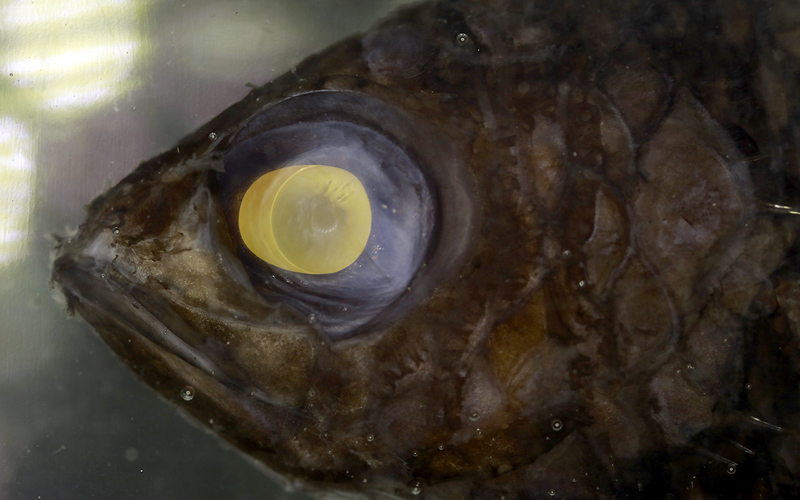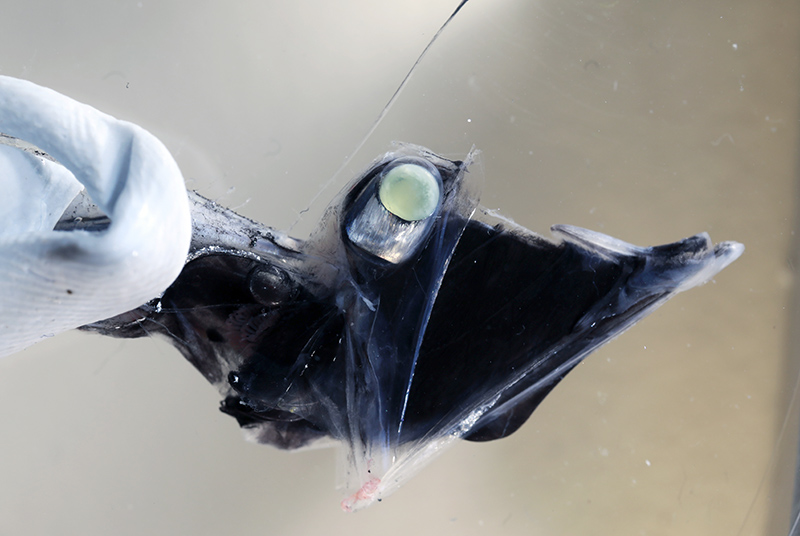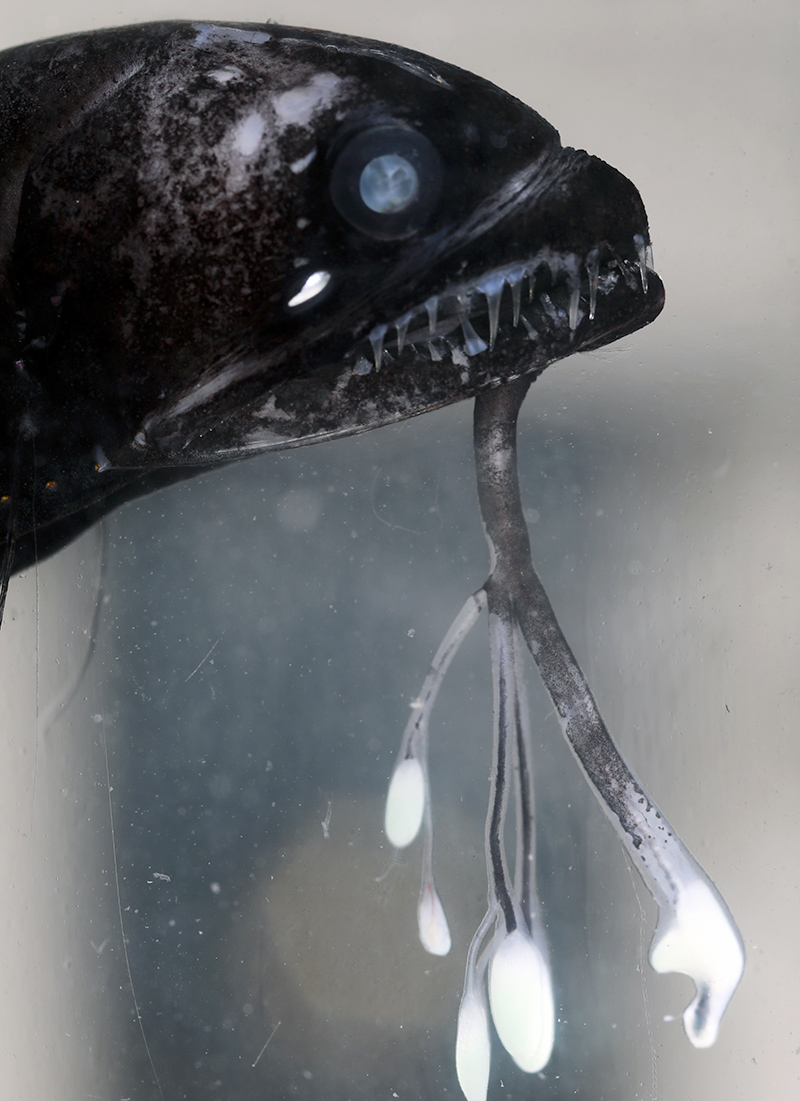Deep-sea fish may look like creatures from another world, but why they have such unusual eyes seems to be the result of an evolutionary process of specialisation.
Dr Fabio Cortesi from the Queensland Brain Institute is studying their genetics and evolution, while comparing fish and human eyes for similarities.
“Vision evolved around 500 million years ago in the ancestor of modern vertebrates. By comparing visual adaptations in animals that inhabit vastly different environments - from the deep-sea to clear mountain springs - we learn about the core aspects of vertebrate vision that remain unchanged and the ones that might be more flexible” Dr Cortesi said.
“In the long-run, this may inform us about specific diseases or developmental defects that occur in our own eyes”.
- Deep-sea vision linked to night life on the reef
- Vision of light: deep-sea fish use colour to see in the dark
- How shifting light patterns protect prey on Great Barrier Reef
- Podcast: Do you see what I see?
Deep-sea fish vision freakily specialised
Dr Cortesi, together with colleagues from the Czech Republic and Germany, studied deep-sea fish species caught from their natural environment, between 200m and 1000m below the surface, while traveling from Perth to Sri Lanka and around the Sargasso Sea.

“Deep-sea fish fascinate people because they are so freaky and specialised – and that is part of their evolution so they can live in the darkness," Dr. Cortesi said.
“At the depth where the fish live, it is essentially a vast desert, so everything for these species is about food and reproduction."
While people generally imagine them to be huge monsters, in reality most deep-sea fishes are about the size of a human thumb. They are often pitch black to hide in the darkness, but they may use specific bioluminescent organs, so called ‘photophores’, to produce their own light to talk to one another or to find prey.
The human eye has three types of cone cells, able to sense red, green, and blue to distinguish colours during the day. At night, we rely on a single rod cell that is sensitive to the smallest amounts of light, but we are essentially colour blind. In the deep-sea, light is hard to come by and its inhabitants have evolved some specific adaptations, including massive eyes that might be shaped in the form of a barrel, to catch every light particle available.
Having evolved to live in the darkness, adult deep-sea fishes rely on rod photoreceptors to see their world and cones are virtually absent. When they are born, however, deep-sea fish larvae live in the shallows where they feed on plankton and grow.

Deep-sea fish adapt vision as they grow

Dr. Cortesi and his colleagues have now discovered that at this stage, the visual system of deep-sea fishes, at least at the molecular level, resembles other vertebrates including our own.
Deep-sea fish larvae start their lives with cone visual pigments and only later, when they sink deeper in the water column, do they switch to use rod visual pigments alone.
“Deep-sea fishes are unique in so many aspects of their biology," Dr. Cortesi said.
"Our study highlights the importance of comparing vision at different developmental stages to tease apart how exactly these animals managed to conquer one of the harshest environments on the planet.”
The research has been published in Molecular Biology and Evolution (doi.org/10.1093/molbev/msab281).



